West Point ‘Klan’ Image Is Small Detail in Large Mural; Artist Viewed KKK as ‘Criminal’
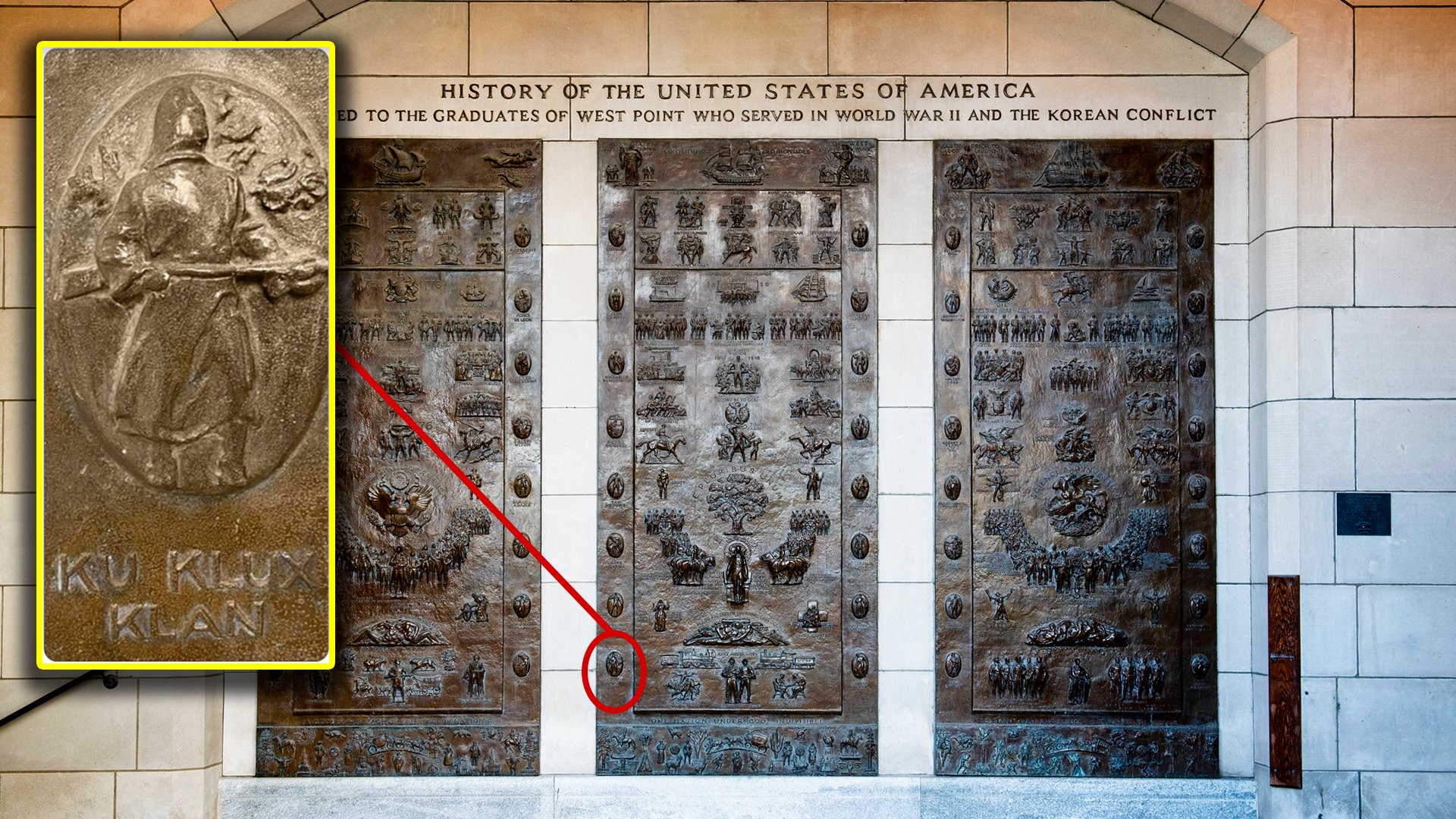
Context emerged August 31 behind the image of a Klansman icon on a plaque outside a science and engineering building at the US Military Academy, or West Point. Picture of mural courtesy West Point, klan image from federal Naming Committee.
A plaque at West Point that drew attention this week for its depiction of a Ku Klux Klan member is part of a sweeping brass mural of close to 150 historical figures, and the KKK imagery appears to have been meant as a warning.
Sculptor Laura Gardin Fraser, in notes she left to West Point about the piece, referred to the Klan as "an organization of white people who hid their criminal activities behind a mask and sheet." She presented the three-panel mural to the school in 1965, depicting several decidedly pro-Union images of the Civil War.
School officials released an art guide from the school's archive on the three-panel mural, or triptych, Wednesday, Aug. 31, after the Klan image was criticized by the federal Naming Commission two days earlier in a report on Confederate names and memorials at the US Military Academy and Naval Academy.
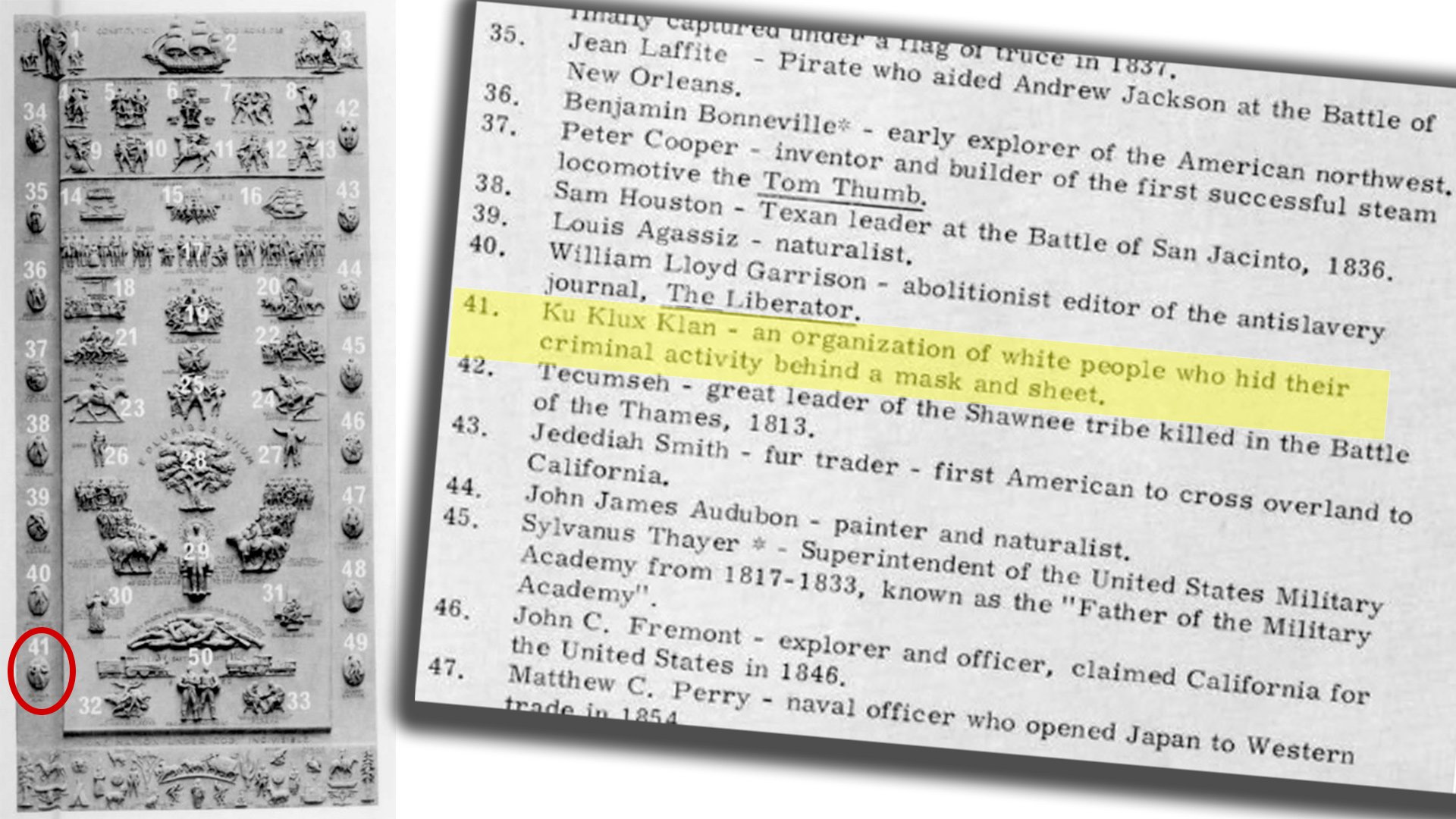
In a guide created for the mural, its sculptor, Laura Gardin Fraser, wrote that the image of the Klansman on the mural was meant to illustrate it as "an organization of white people who hid their criminal activity behind a mask and sheet." Images courtesy of the US Military Academy. Composite by Coffee or Die Magazine.
The guide details how the 11-foot-tall artwork came to the school and provides Fraser's intent behind each of the nearly 150 characters and events it depicts. The mural, Fraser wrote at the time, originated as she "started to make sketches in clay, depicting historical incidents or persons. Eventually these sketches in clay became so numerous, like the leaves of an unbound book, that [she] patterned them onto large panel backgrounds."
The guide even seems to anticipate modern controversies over Civil War imagery, introducing that section of the mural with: "It should be noted that where historic personages are shown it is not intended as a memorialization of these individuals but rather as representative figures of their time."
Fraser called the full mural The History of the United States of America, and its three panels sit at the entrance of Bartlett Hall, a science and engineering building on the campus. The mural depicts eras of US history. It was installed in 1965, with an inscription dedicating it to West Point graduates who fought in World War II and in the Korean War.
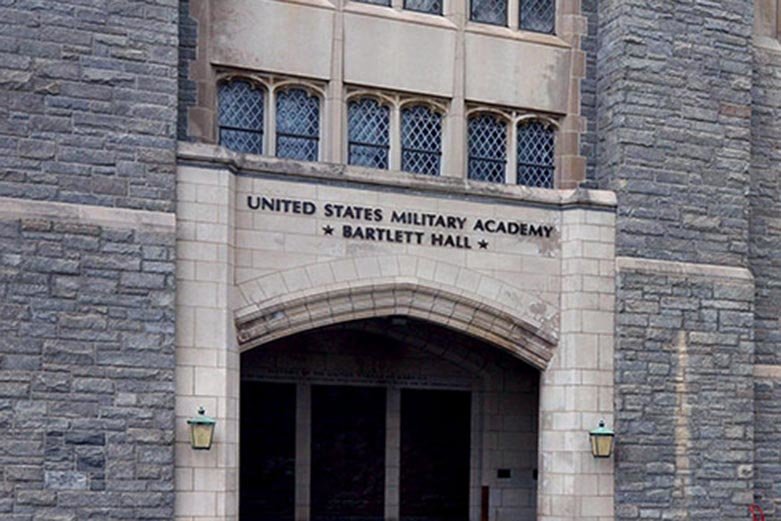
Bartlett Hall at the US Military Academy. Photo courtesy of the US Military Academy.
The middle panel, dubbed "One Nation, Under God, Indivisible," covers most of the 1800s, including the Civil War, and contains the Klan imagery. The hooded Klansman, bearing a rifle, is one of 16 historic figures depicted on the panel's border, some of which are real people, while others are general archetypes. They include women's rights leader Susan B. Anthony, abolitionist William Lloyd Garrison, Sam Houston, Davey Crocket and two Native American chiefs, Tecumseh and Osceola. There is also a "carpetbagger" icon.
The central section of the panel depicts scenes from the War of 1812, the Civil War, the uniting of the transcontinental railroad, the opening of the Erie Canal, the Burr-Hamilton duel, and Horace Greeley's early-century admonition to "Go west, young man!"
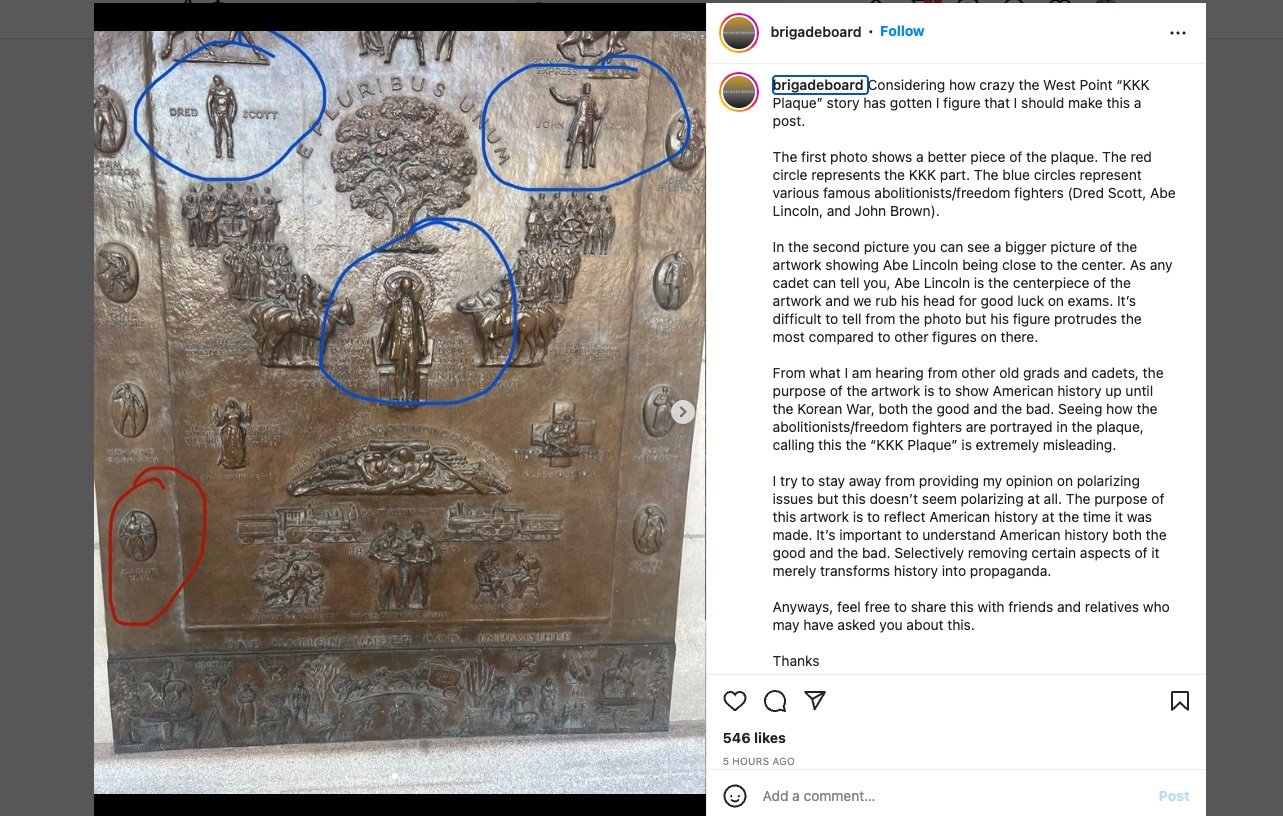
A post on the popular West Point-focused Instagram account Brigade Board noted the location of the mural, the klan icon and several anti-slavery and anti-Confederacy elements on the mural.
The panel includes an oak tree, whose "grandeur and power," Fraser said, symbolizes "America as a single union which Lincoln was determined it must remain."
The other two panels are similarly thick with images and characters. The first panel covers the arrival of Leif Erickson through the passage of the western frontiers, while the third covers the rise of science and technology.
According to the West Point guide, the panels came to campus after they were discovered unfinished in Fraser's studio in the 1950s by an Army general who was then a professor at the school. They were installed in 1965 at the entrance to Bartlett Hall, which was then a library.
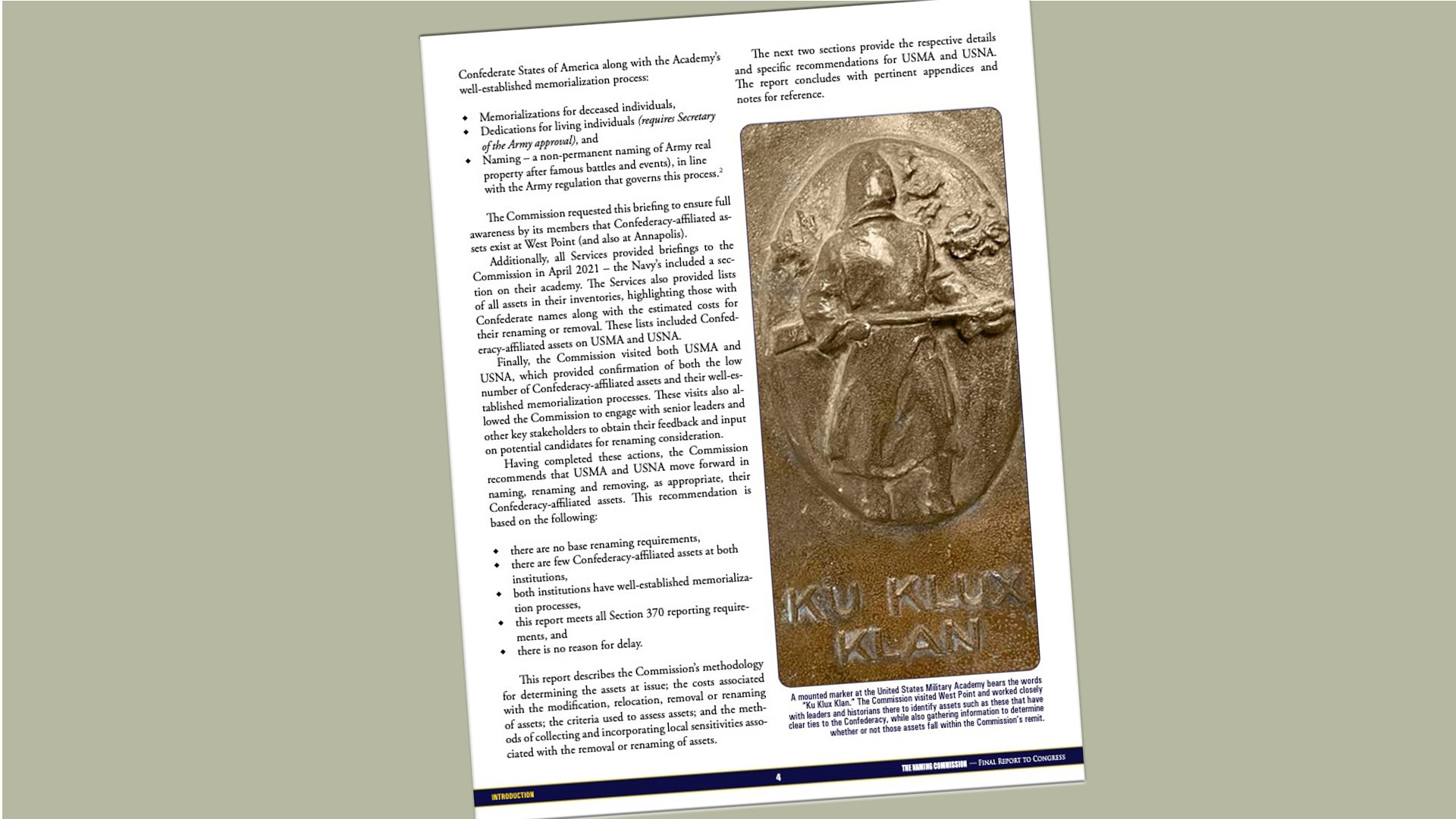
The Klan icon, depicted across a full page with no indication of its context in a larger mural, in the Naming Commission report released Monday, Aug. 29, 2022. Composite by Coffee or Die Magazine.
The Naming Commission published its report Monday. The report took issue with the appearance of the Klan icon, publishing a large picture of it with no context or visual reference to the larger mural it was on.
Though the commission said the Klan imagery was outside its purview, it found seven locations and four items of memorabilia that, in the commission’s view, celebrated West Point graduates who'd served in the Confederate Army. Most were related to Confederate Gen. Robert E. Lee, a West Point graduate and one-time superintendent.
The full statement from West Point on the Fraser triptych reads as follows:
“There is a triptych at the entrance of Bartlett Hall at the U.S. Military Academy that references the history of the United States as told in bronze relief. The artwork was dedicated on June 3, 1965, and has three panels, which measure 11’ X 5’ each. As part of the second panel titled “One Nation, Under God, Indivisible,” there is a small section that shows a Ku Klux Klan member. Among many other symbols, the triptych also includes individuals who were instrumental in shaping principal events of that time, and symbols like the Tree of Life that depict how our nation has flourished despite its tragedies. The artwork was originally dedicated to West Point graduates who served in World War II and Korea."
Read Next: Army Grounds Entire Chinook Fleet, Citing Engine Fires
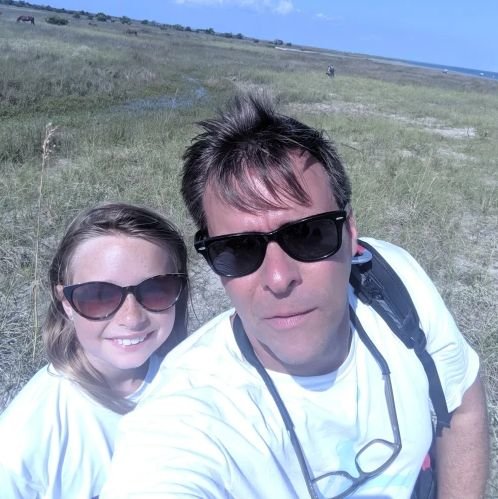
Matt White is a former senior editor for Coffee or Die Magazine. He was a pararescueman in the Air Force and the Alaska Air National Guard for eight years and has more than a decade of experience in daily and magazine journalism.
BRCC and Bad Moon Print Press team up for an exclusive, limited-edition T-shirt design!
BRCC partners with Team Room Design for an exclusive T-shirt release!
Thirty Seconds Out has partnered with BRCC for an exclusive shirt design invoking the God of Winter.
Lucas O'Hara of Grizzly Forge has teamed up with BRCC for a badass, exclusive Shirt Club T-shirt design featuring his most popular knife and tiomahawk.
Coffee or Die sits down with one of the graphic designers behind Black Rifle Coffee's signature look and vibe.
Biden will award the Medal of Honor to a Vietnam War Army helicopter pilot who risked his life to save a reconnaissance team from almost certain death.
Ever wonder how much Jack Mandaville would f*ck sh*t up if he went back in time? The American Revolution didn't even see him coming.
A nearly 200-year-old West Point time capsule that at first appeared to yield little more than dust contains hidden treasure, the US Military Academy said.












